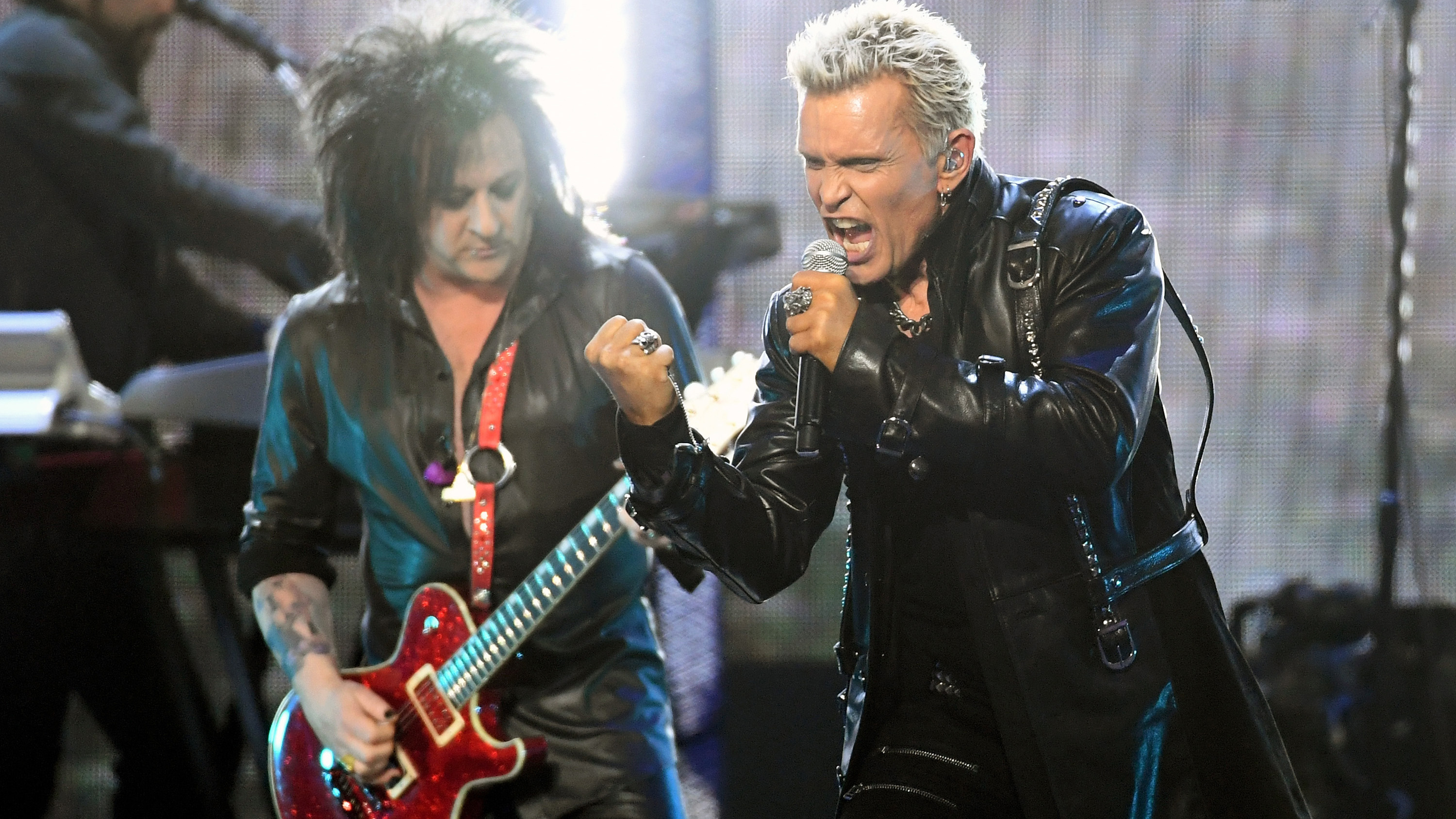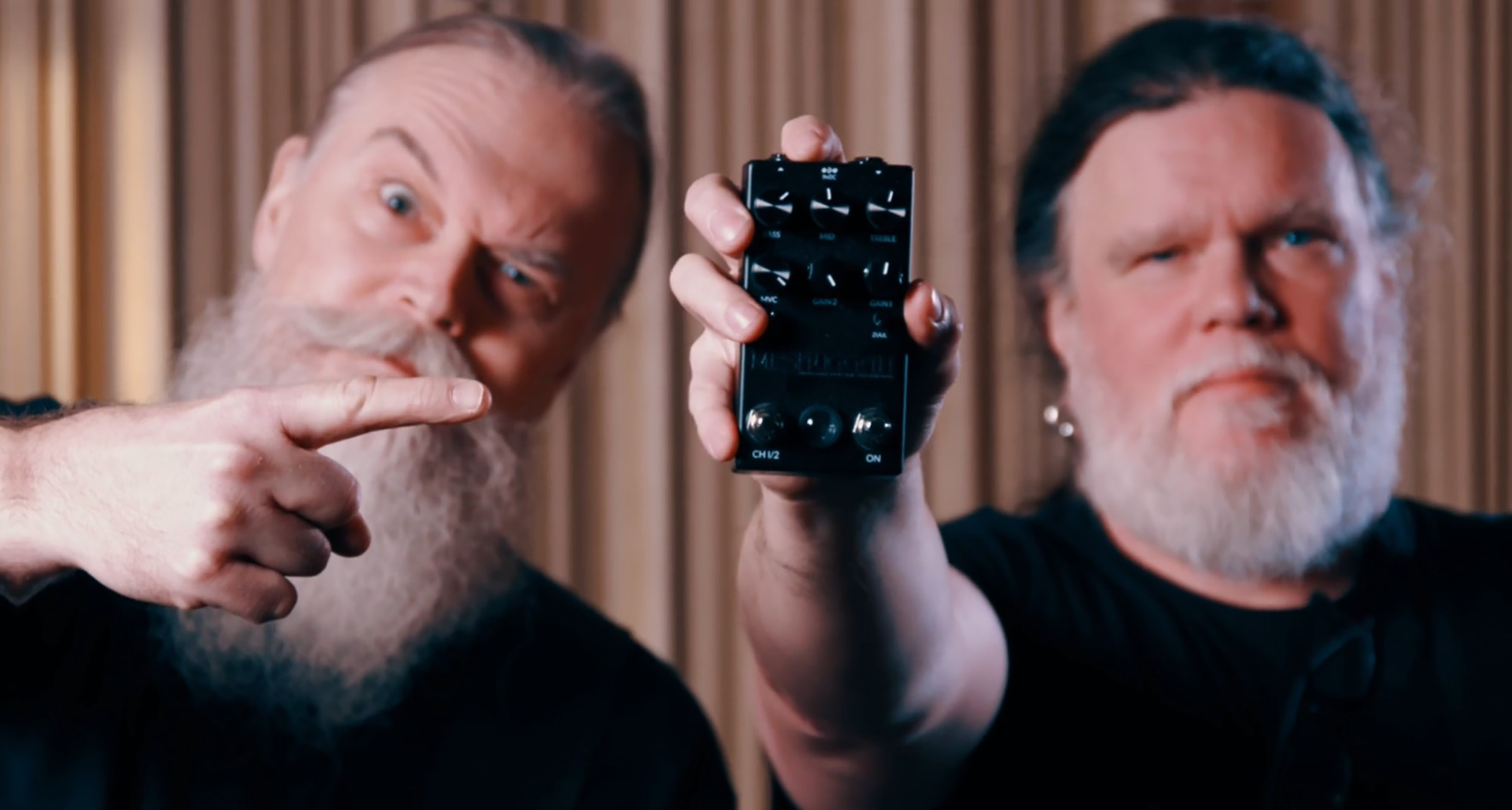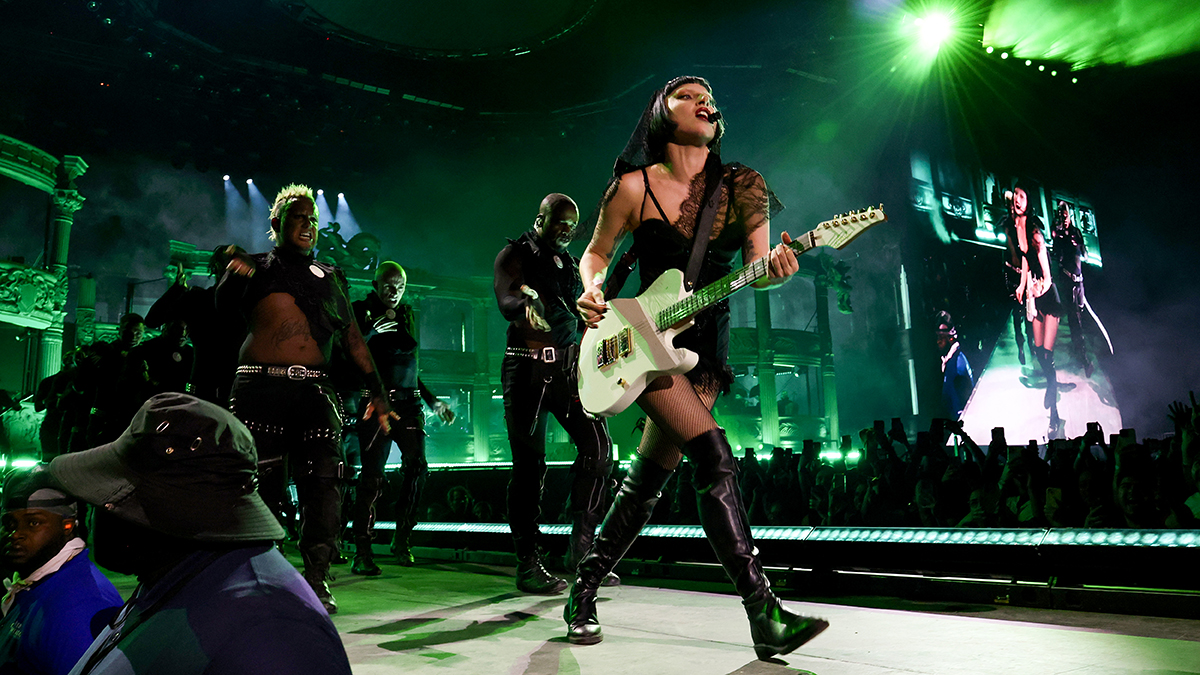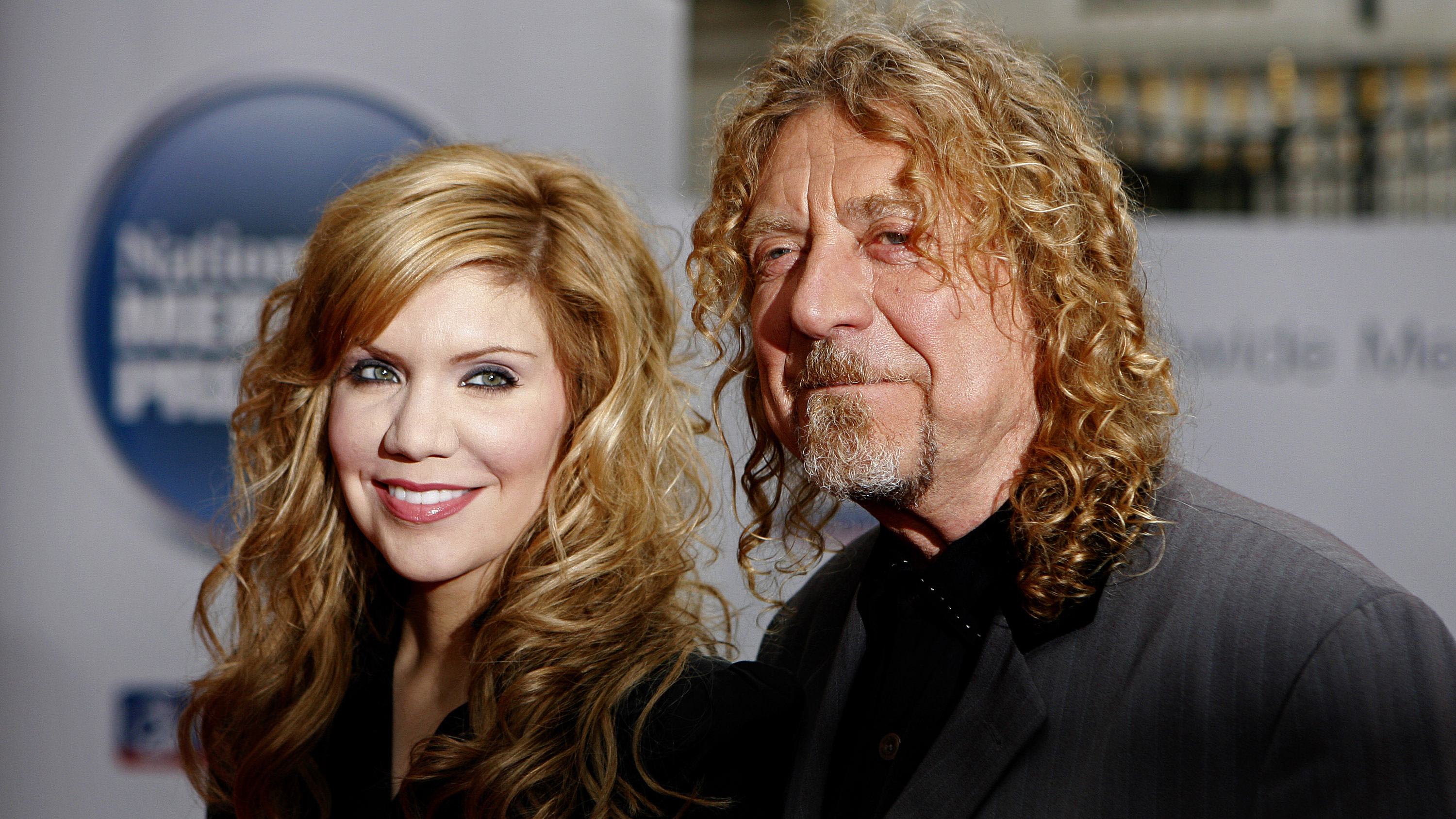Tom Morello talks finding your tone, jazz lessons and the future of Prophets Of Rage
Reimagining RATM, making cheap gear work and the possibility of an Audioslave reunion
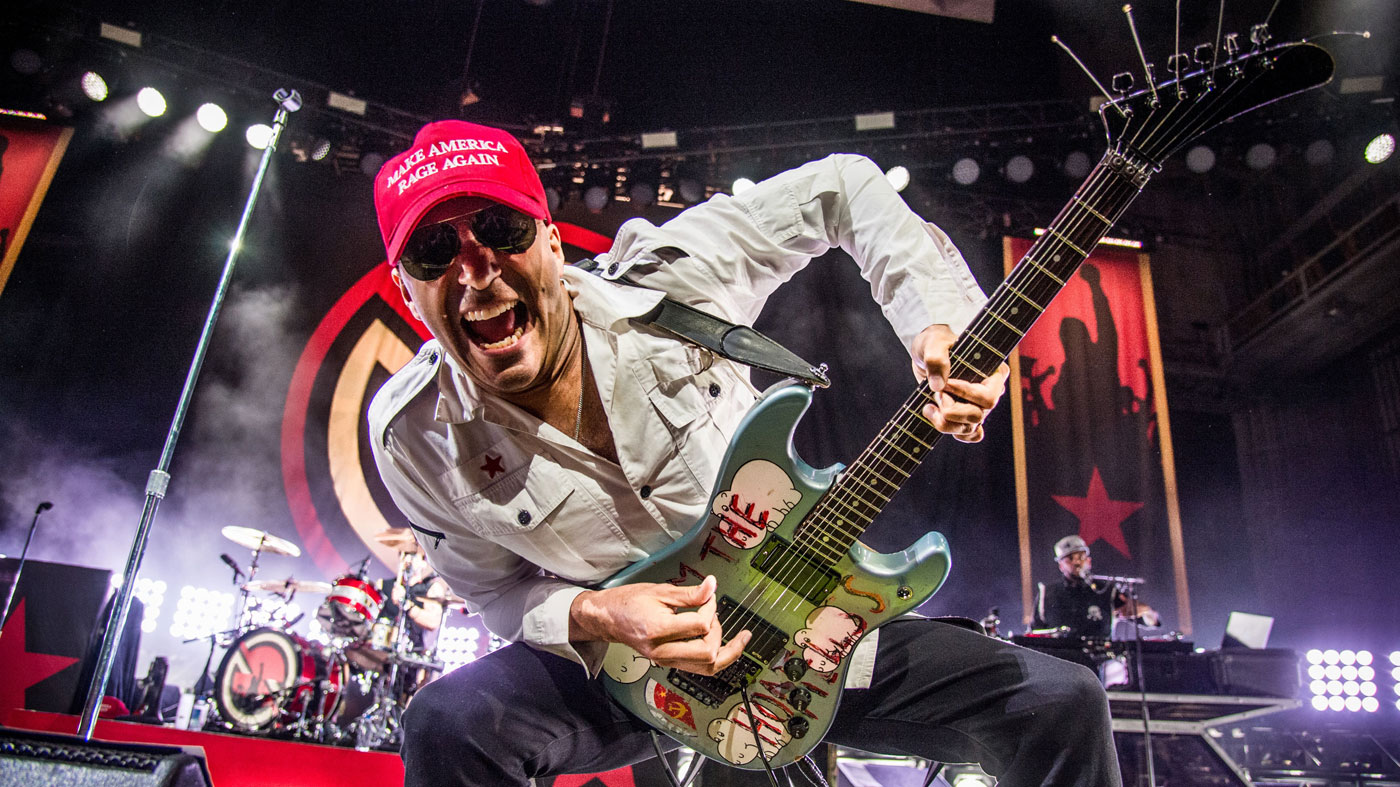
Make America rage again
It’s been a busy year for supergroups, but none of them have an agenda quite like Prophets Of Rage. Tom Morello guides us through the rebellion…
As Tom explains to us, this isn’t a doe-eyed nostalgic tribute, their time is definitely now
You see the words ‘Arm The Homeless’ scrawled across a guitar, you know exactly who it belongs to. And while Rage Against The Machine’s recent activity has been sporadic, Tom Morello has never stood still - whether under his solo guise, The Nightwatchman, or collaborating with Bruce Springsteen.
This year however, something more attention-grabbing was required, and the result is Prophets Of Rage - a rap-rock supergroup that’s essentially RATM fronted by Cypress Hill’s B-Real and Public Enemy’s Chuck D, with DJ Lord behind the decks for good measure. As Tom explains to us, this isn’t a doe-eyed nostalgic tribute, their time is definitely now…
So what made you realise it was time to ‘make America rage again’?
“Well, the formation of Prophets Of Rage was in direct opposition to the insane electoral season we’re having here in the United States. Media commentators often refer to the Donald Trump campaign as raging against the machine and we were understandably aghast at that, so we decided to remind the world what raging against the machine really means.”
Don't Miss
Tom Morello's top tip for guitarists? "Gear doesn't matter"
Tom Morello's 13 greatest heavy metal albums of all time
Tom Morello talks recording, performing with Bruce Springsteen
All-Star Gear: Tom Morello's Arm The Homeless guitar and Marshall JCM800 amp
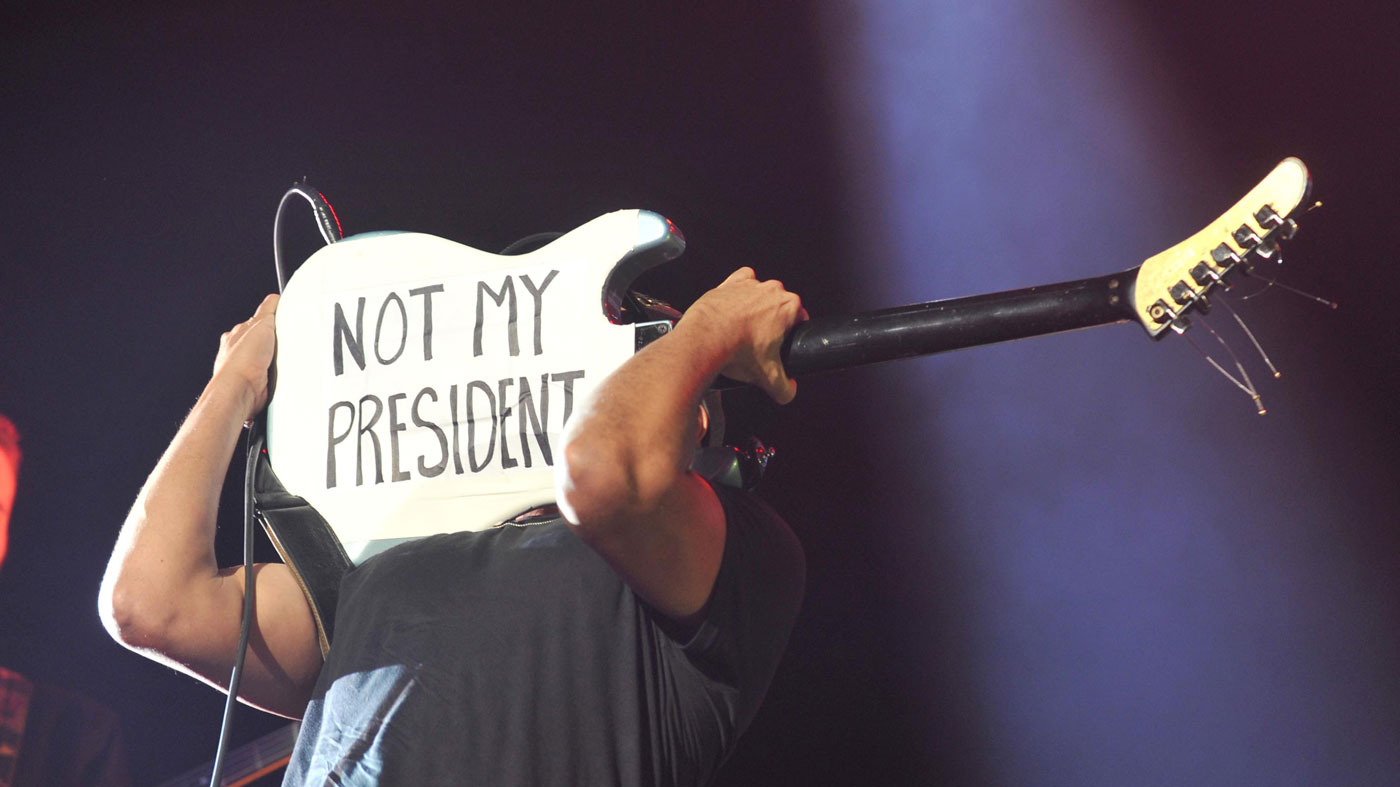
Brexit, stage left
Politics has never been more in the public eye - we’re still recovering from Brexit…
“One of the similarities between Brexit and the rise of Donald Trump is a lot of white, working-class people who are given very few avenues to express their frustration through the traditional channels. They think that the only way to say ‘Fuck you’ is to align themselves with [Trump’s views]. And one of the reasons we put this band together was to say, ‘You should be upset by what’s going in the world, but there are other options…’”
Does it feel like treading new ground for a sound-manipulating guitarist like yourself to work with a DJ? How does it work?
DJ Lord is one of the greatest living turntablists, so we’ve added a full-on scratch battle
“My role in RATM was basically to be the DJ of the band… and I still perform that role a great deal! But we’ve found ways to supersize our talents. I’d say DJ Lord is one of the greatest living turntablists, so we’ve added a full-on scratch battle between him and I into the set. And yes, it tends to blow the roof off.”
So when you hear B-Real and Chuck D putting their own twist on RATM songs, how different do they sound?
“It’s funny, through Cypress Hill and Public Enemy, B-Real and Chuck D were the two principle hip-hop influences on Rage Against The Machine. We listened to the first self-titled Cypress Hill record exhaustively while writing what would become our first album, and B-Real even appears in the Killing In The Name video! If you go frame-by-frame, you’ll see him in there. And as for Public Enemy, they took us on our very first tour up the West coast.
“We have a longstanding relationship with both guys and a tremendous amount of admiration for their work. Without those two bands, there never would have been Rage Against The Machine. So it’s an honour to stand beside them and Rage-ify their catalogue, as well as have them interpret our old tracks.”
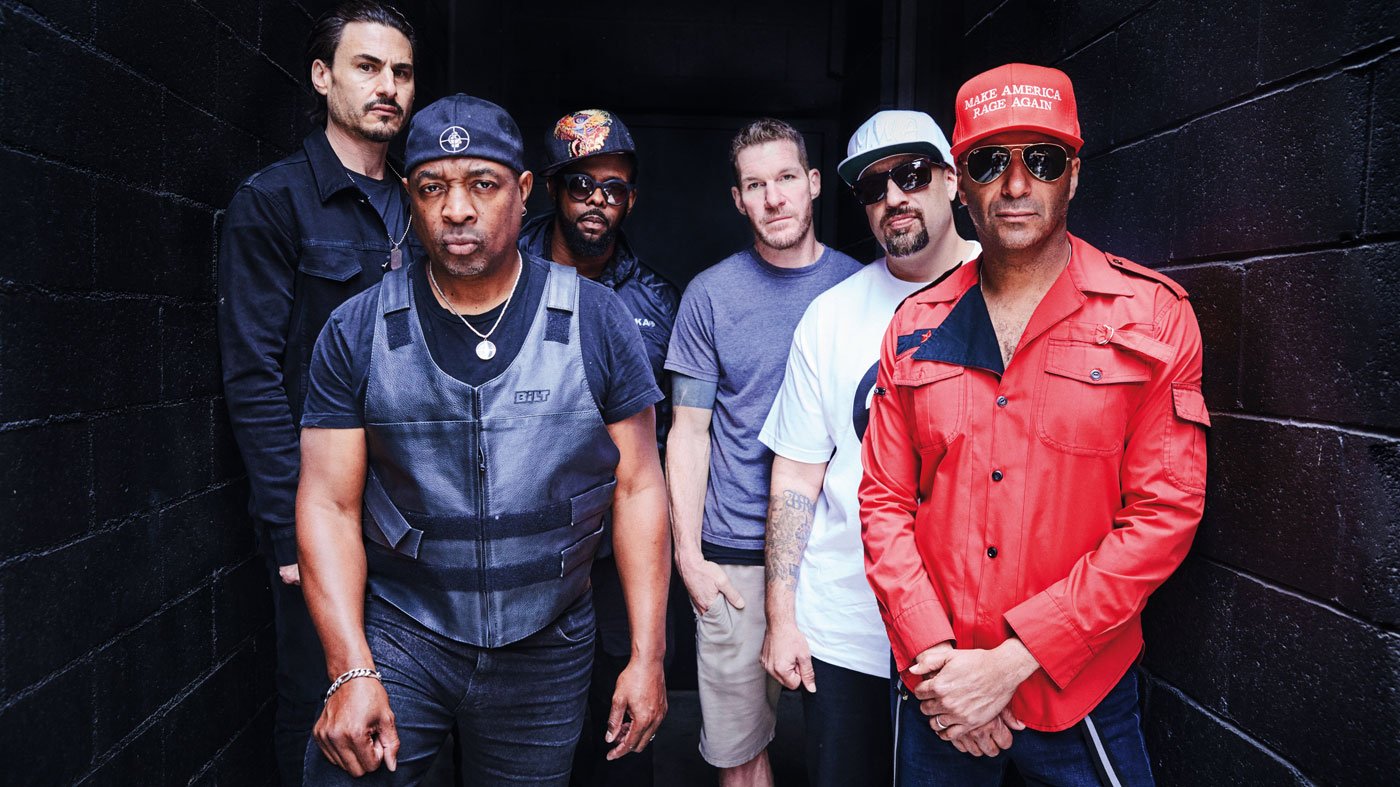
Memory lane is closed
And you’re writing new music as well…
“In 2016, there’s certainly nothing in the musical landscape quite like Prophets Of Rage: this isn’t a trip down memory lane, this is designed for now. While some of those songs we are playing are protest songs from two decades ago, their relevance and message echoes even louder now. And that’s exactly what we’re trying to do, make something contemporary and artistically forward-thinking.”
Do you miss working with [RATM frontman] Zack De La Rocha?
Our music is pretty much James Brown-based, it’s all on the one
“Zack is one of the greatest frontmen and lyricists of all time. He’s an electric performer like no other, maybe James Brown gives him some competition. Or maybe not! [laughs] In my mind, he’s the greatest and I wish him well in doing what he wants to do on his own path.”
What are the odds of him guesting with Prophets one night?
“I don’t know... but he’d be more than welcome!”
There are moments in the Prophets set where you are soloing over just drum tracks. What’s the secret to playing over hip-hop?
“Our music is pretty much James Brown-based, it’s all on the one. You know, sometimes I think the entire RATM catalogue has just one chord progression to it! [laughs] If you’re playing an Yngwie Malmsteen solo or an Allan Holdsworth solo or even a John Coltrane solo, what makes it interesting is the harmonic choices that the soloist makes over a shifting chord progression. Well, what if you have no chord progression? That is my challenge, to make sonically interesting solo passages that have nowhere to go! That’s when I started exploring different sounds and textures that were unconventional for electric guitar.”
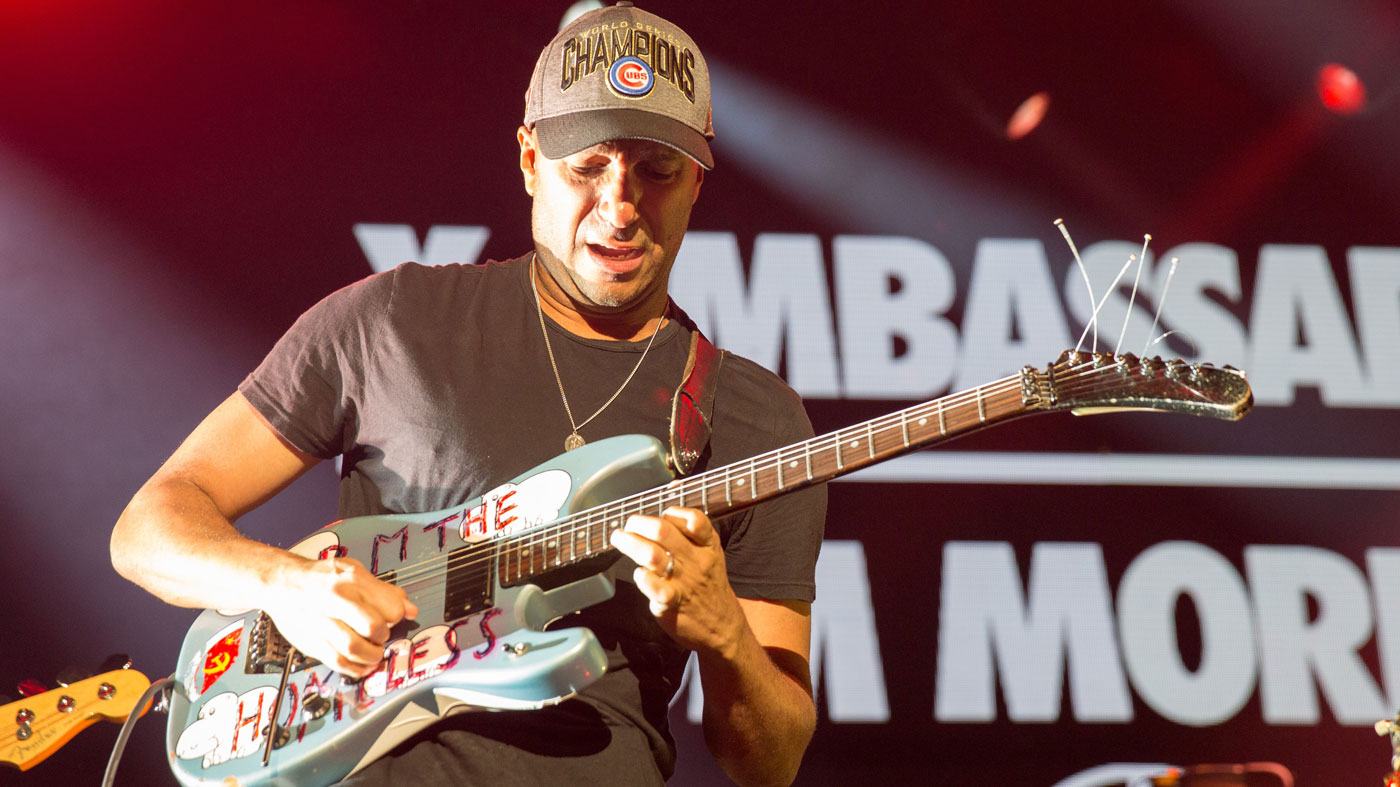
Sound clash
There’s a neoclassical delay-repeat lick you’ve written into beginning of Public Enemy’s Shut Em Down. How did you come up with that?
The Channel Zero mash-up pointed to a future with no musical inhibitions, no rules, where anything from anybody’s catalogue is fair game
“That’s an elaboration of the toggle switch technique, with the delay set in a particular way. It’s all done by eyeball, there’s no digital equipment… I’d never have anything like that in my world.
“I have this ping-pong effect that kinda harks back to Eddie Van Halen on the song Cathedral. But I also played along to classical music for about 5000 hours over my life too, so I like incorporating some of those diminished chords and whatnot. It’s all part of the same game to me!”
And how about the mash-up of Audioslave hit Cochise with Public Enemy’s She Watch Channel Zero?!
“That was all Chuck’s idea. Since we’ve been playing together, he’s been going deep into the catalogue of our various bands and he just thought that riff was murderous. So he suggested trying … Channel Zero over it and, to be honest, we weren’t too sure whether we were going to open the door to the Audioslave world. But after running it at rehearsal, it just sounded massive. It pointed to a future with no musical inhibitions, no rules, where anything from anybody’s catalogue is fair game! [laughs]”
Chris Cornell recently told us that an Audioslave reunion "would be great"; what do you make of it all?
"I love Chris and I love what we did together. That door has certainly never closed in any way, but right now, it's looking like we're pretty busy. We're in the middle of a North American tour, I'm also working on a record of my own and the other guys have things going on, too.
"But whatever happens in the future, Chris is one of the greatest singers of all time, and there's no way I couldn't be proud of the shows and music we played together."
You cover the Beastie Boys’ classic No Sleep Till Brooklyn in your set - and you’re throwing in some pretty adventurous chromatic runs there…
“The big introduction to outside playing, at least for me, was Allan Holdsworth. I remember a friend of mine playing me his song Metal Fatigue. And admittedly, while the singing is kinda hokey, the guitar playing is insane. It was the first time I heard someone go outside of the expected melodic parameters, and that sounded fantastic to me.
“I also spent a lot of time jamming along to jazz greats John Coltrane, Charlie Parker and guys like that. I wouldn’t say I am deeply attuned to all the jazz changes and theory going on in those songs, but I could definitely feel how to flow with the music - as opposed to being trapped and locked into particular finger patterns that work in certain keys. That’s been part of my playing for a long time and I love it… it provides the freedom to let go on the fretboard.”
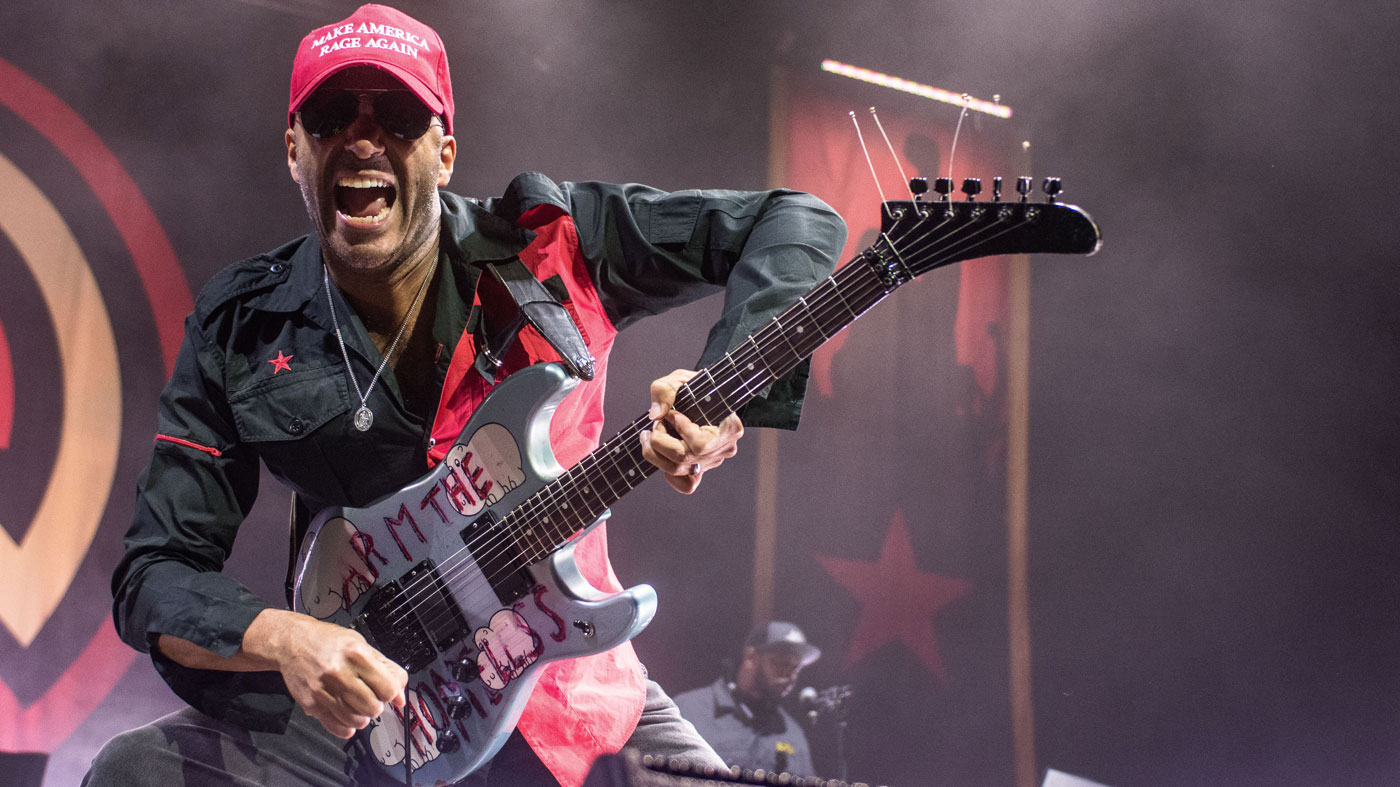
Wham-bam - thank you, ma'am
Do you still need to warm up before you play shows?
“It does take some warming up but man… I’ve spent so much of my life practicing; it doesn’t seem to go away now. It’s always right there, especially considering how much we’ve been playing over the course of the last six months. My chops are pretty high up right now! [laughs]”
You’ve always been vocal about only using analogue gear. With all the advances in profiling technology in recent years, have you ever been even tempted to try out digital equipment?
I only play the guitars that I trust. I know that Killing In The Name sounds great on that Telecaster, I’m less sure with the other guitars
“It’s maybe less philosophical and more practical with me. I don’t think my brain is wired to understand even how to plug those things in. I’m never gonna go through the manual and learn how to preset all that stuff, it’s just not me.
“That’s why the DigiTech Whammy pedal felt like such a revelation when I got one in 1991 - I had been trying to find a way to approximate the harmonizer used on that Allan Holdsworth song. I bought a rack harmonizer but I couldn’t even figure it out.
“Then they released the pedal where all I had to do is step on it, and it provided this whole new world of sonic exploration. So I would say my choice to stick with analogue is mainly about my own technological limitations than any sort of moral point of view on the whole thing.”
Is there any gear you’ve dusted off for the Prophets tour that you haven’t used in a while?
“There are a few new additions… the Soul Power guitar made it back into the set, I use it for the Cochise jam. There’s a nice D’Angelico model, if you watch footage of Dave Grohl joining us on stage in Toronto, he’s actually playing my guitar there. That’s become the jam room axe and generally sounds great. To be honest, I only play the guitars that I trust. Like for example, I know that Killing In The Name sounds great on that Telecaster, I’m less sure with the other guitars… so I tend to stick with the one that feels right.”
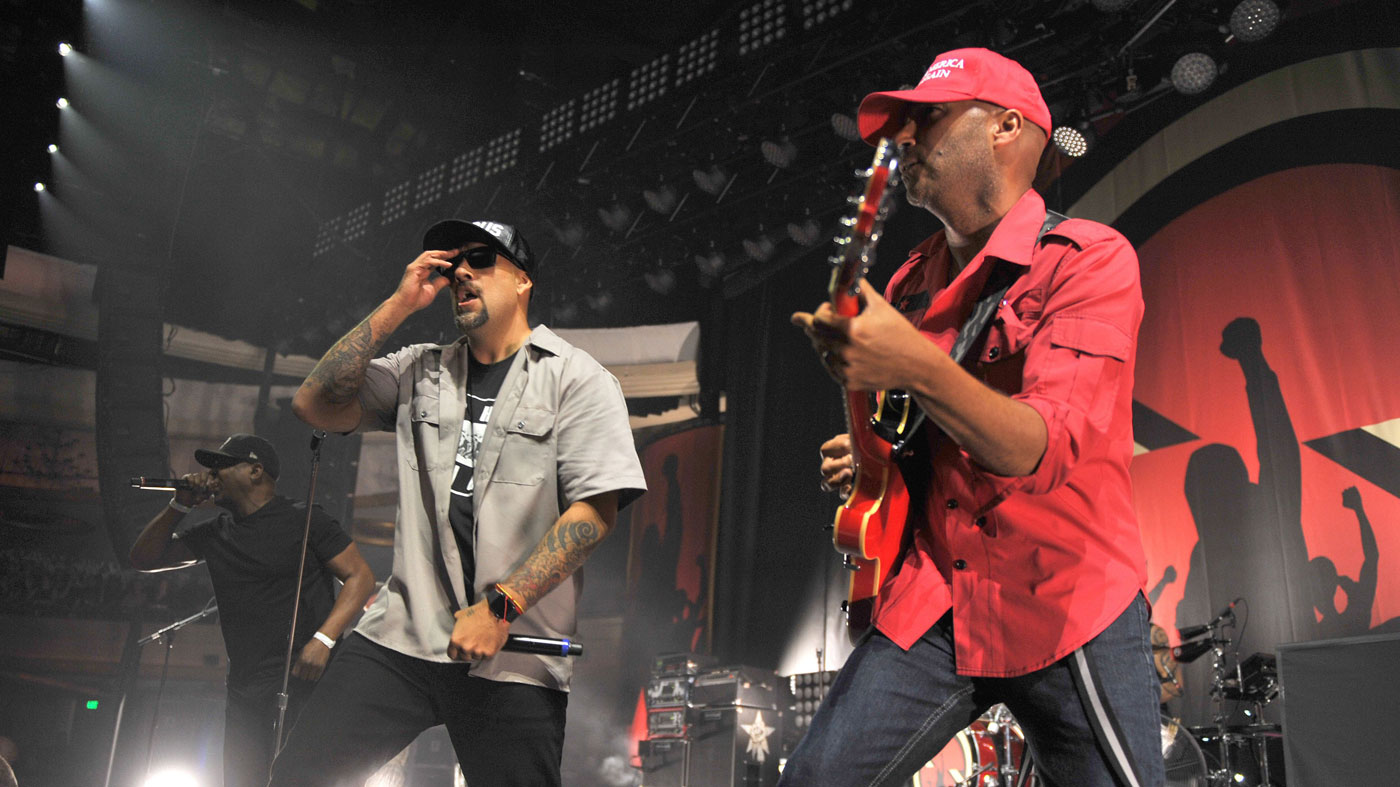
Old friends
So everything else in your rig is pretty much the same?
“There is one new addition, but it’s kept out back. In the mid-90s, DigiTech tried to make a pedal that had all my sounds in it, called the Space Station. Obviously, I had to buy myself one!
One day I must have spent about five hours with my amp trying to make it sound the best that it could. It was a life-changing decision
“I recently found it in the closet, and it’s this really noisy pedal that I used here and there on the last tour I did with Bruce Springsteen. It has one or two settings that make for worthwhile cacophony!
“Other than that, it’s the same guitar and amp I’ve been using since 1988 - the Marshall JCM800 50-watt 2205 channel-switching head going into a Peavey 4x12 cabinet. That’s my sound right there.”
It still amazes us how heavy your music can feel without actually dialling in much gain at all…
“I was about 26 or 27 when I made that first RATM record, so I did have some experience behind me. In my late teens and early 20s, I really chased tone. I wanted to sound like Randy Rhoads or Nuno Bettencourt or Eddie Van Halen or Andy Gill, but I couldn’t make it sound like those guys.
“I couldn’t afford any other gear, so one day I must have spent about five hours with my amp trying to make it sound the best that it could, marking all the settings as I went. It was a conscious and life-changing decision: ‘I’m not going to worry about tone ever again!’
“Instead I’d just focus on creating music with the tone that I had and thought, ‘Okay, it looks like I’m stuck with this tone, so what kind of music does this tone make?’ All you have to do is listen to something like Led Zeppelin’s song The Ocean. The greatest grooves, the greatest riffs, heavy as can be… and played on a Telecaster?! Gain does not equal heaviness. A huge riff doesn’t need gain, it needs deep groove and the right notes.”
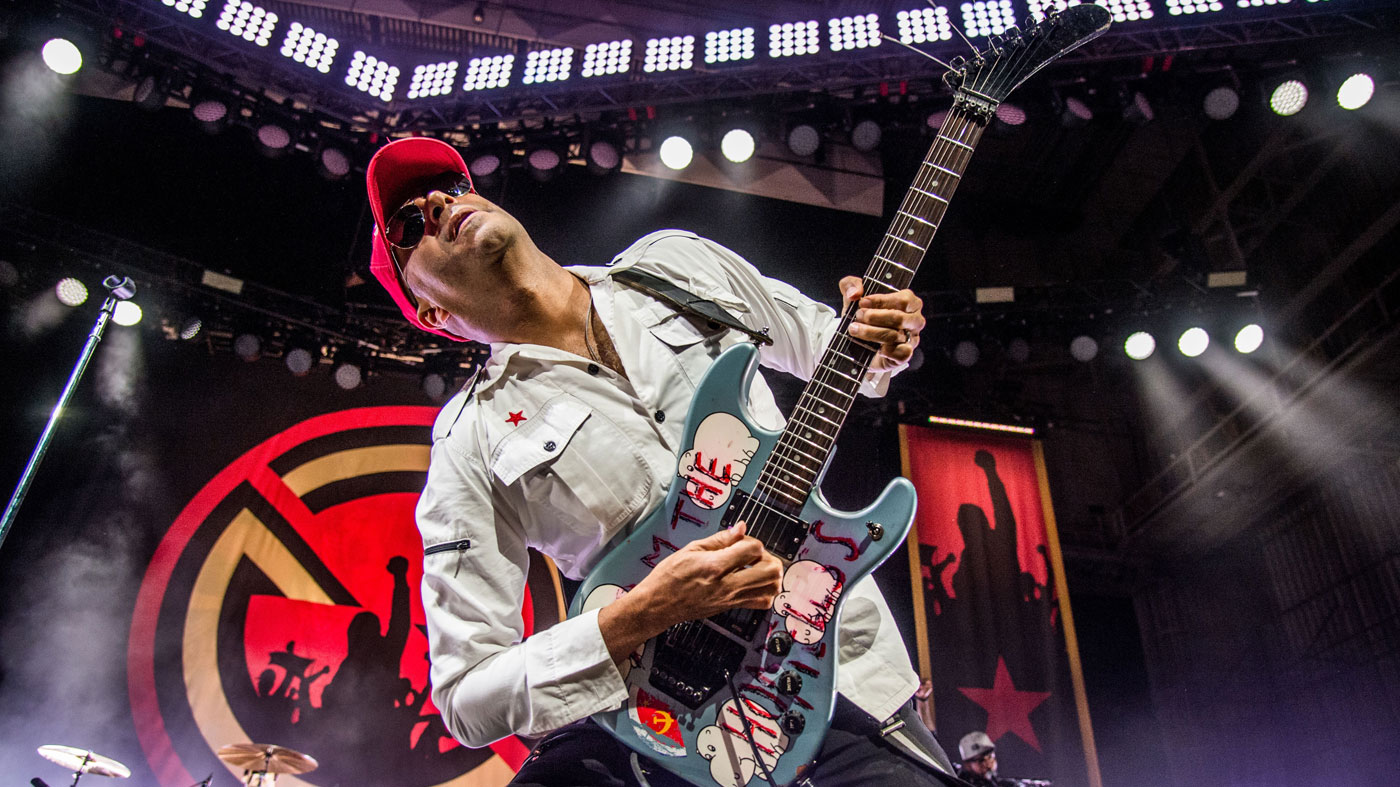
Sound theory
What advice do you have for guitarists that are stuck in the same old ruts - is there anything that helped you break habit and force evolution?
“I would say that you should try to take a step back… My take is that the electric guitar is a relatively new instrument on this planet. You should not assume that the way it’s been played so far is the only way that it can be played. It’s just a piece of wood, six or seven wires and a handful of electronics inside. That’s it!
If you really mean it, you’ll play if you have a cold or if you have an exam in the morning, you’ll play no matter what
“When I deconstructed it all in my mind, I realised it wasn’t about learning Chuck Berry licks, it’s more about what sort of sound does this thing make and how can those noises be made into songs? It really took off from there.
“I had blinders on before by practising too much, desperately trying to play like Yngwie Malmsteen or Steve Vai… those guys cornered the market with their own particular styles. I wanted to have my own style. You could look at it as I didn’t want to just run on the same treadmill as them, I wanted to build a whole new gym!”
You never let your audience down on the performance side of things… what helped you understand how to live in the moment?
“That can only come from playing live as much as possible. You can be a basement shred monster, but when you step out in front of an audience and don’t know how to protect your guitar from getting unplugged, it’ll be a bit pointless.
“Learning from other musicians is key, that’s how you develop. Music, at its best, should be a chemical reaction between however many people. When you learn how to follow those people, you’re on your way! It’s about dedication just as much as regular practicing: if you’re serious about becoming better, you practise at least one hour every day, without fail. Not 58 minutes a day or six hours during the weekend.
“If you really mean it, you’ll play if you have a cold or if you have an exam in the morning, you’ll play no matter what because you have already committed to it. And it’s that commitment that will yield better results.
“Also, remember to wash your hands before your play. Your strings will last a lot longer and if you don’t have a lot of money to replace them, that’s a good thing!”
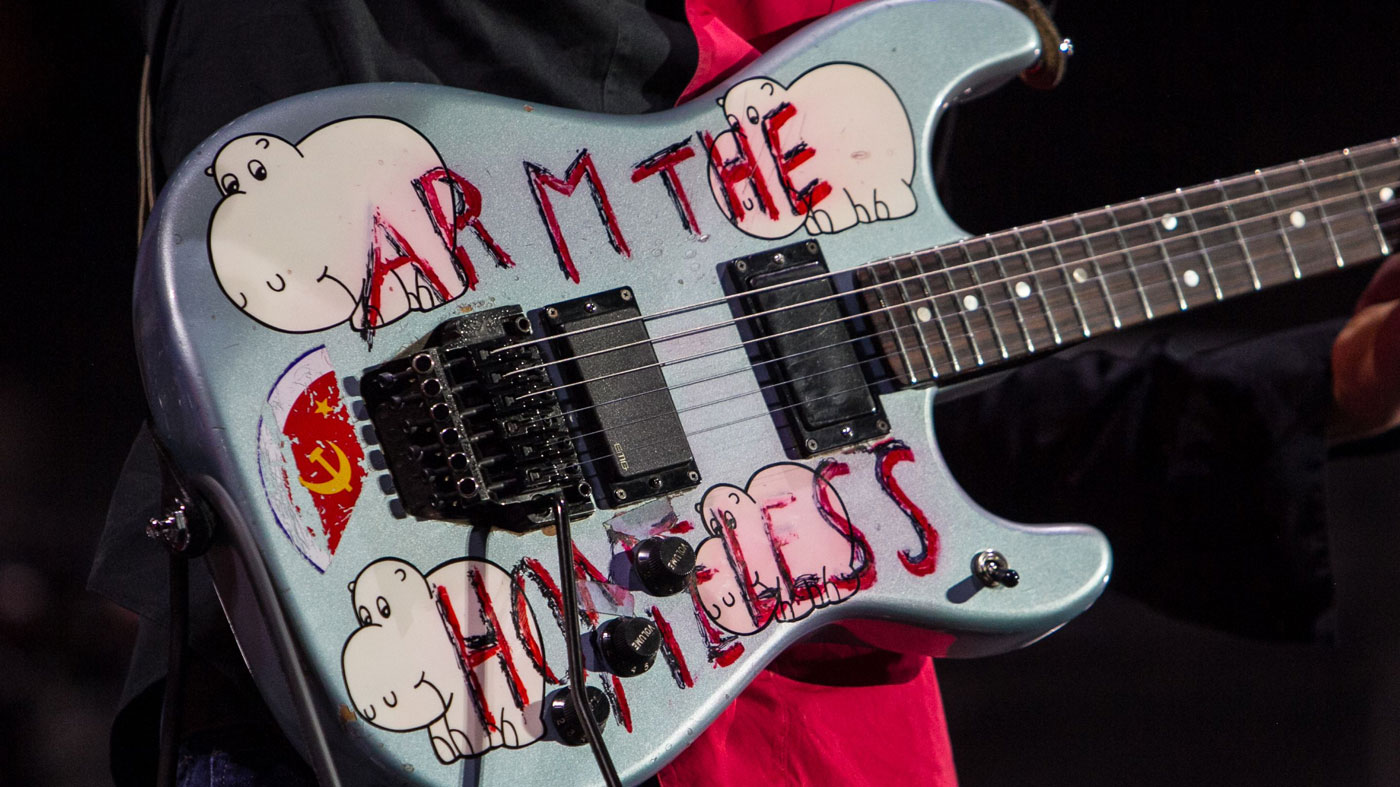
You're the voice
Confession time - how many guitars do you own in total?
“I’m not a guitar collector. Through the years, people have given me a bunch of guitars that I have in cases lying around, so altogether I’d say about 25, maybe 30 guitars. But of those, there are a very small percentage that get taken out on tour and a couple more that get brought with me to the studio. I still have my very first guitar, the one I started out practising six hours a day on.”
What are the main differences between your outlook today and the 25-year-old Tom that wrote Arm The Homeless on his guitar and changed the world?
With Prophets, the focus is exclusively on how we can make our shows crush even more
“Back then, I was a zealot when it came to practising, doing six to eight hours a day. Though at that stage I definitely hadn’t found my own voice. I was amassing technique without an artistic vision to fit it into. I would say it was the formation of Rage Against The Machine that allowed me to find that voice and express myself via electric guitar.
“In 2016, the major shift is - while I’m very proud of my other bands - they did have a great deal of drama and emotional turmoil. Much of the focus on each 24-hour day was not on the music, but more on the Spinal Tap band problems.
“With Prophets, the focus is exclusively on how we can make our shows crush even more, or what can I play during Bullet In The Head that will flip people’s minds. I would say there’s a much more laser-like focus on the task at hand.”
Prophets Of Rage’s debut EP, The Party’s Over, is available now on Caroline Records.
Don't Miss
Tom Morello's top tip for guitarists? "Gear doesn't matter"
Tom Morello's 13 greatest heavy metal albums of all time
Tom Morello talks recording, performing with Bruce Springsteen
All-Star Gear: Tom Morello's Arm The Homeless guitar and Marshall JCM800 amp
Amit has been writing for titles like Total Guitar, MusicRadar and Guitar World for over a decade and counts Richie Kotzen, Guthrie Govan and Jeff Beck among his primary influences. He's interviewed everyone from Ozzy Osbourne and Lemmy to Slash and Jimmy Page, and once even traded solos with a member of Slayer on a track released internationally. As a session guitarist, he's played alongside members of Judas Priest and Uriah Heep in London ensemble Metalworks, as well as handling lead guitars for legends like Glen Matlock (Sex Pistols, The Faces) and Stu Hamm (Steve Vai, Joe Satriani, G3).
“It pretty much half killed us. Whether the band would continue was in the balance”: The Radiohead album that almost broke up the band, turned the music industry on its head - and became their best record
“It is ingrained with my artwork, an art piece that I had done years ago called Sunburst”: Serj Tankian and the Gibson Custom Shop team up for limited edition signature Foundations Les Paul Modern
“It pretty much half killed us. Whether the band would continue was in the balance”: The Radiohead album that almost broke up the band, turned the music industry on its head - and became their best record
“It is ingrained with my artwork, an art piece that I had done years ago called Sunburst”: Serj Tankian and the Gibson Custom Shop team up for limited edition signature Foundations Les Paul Modern







